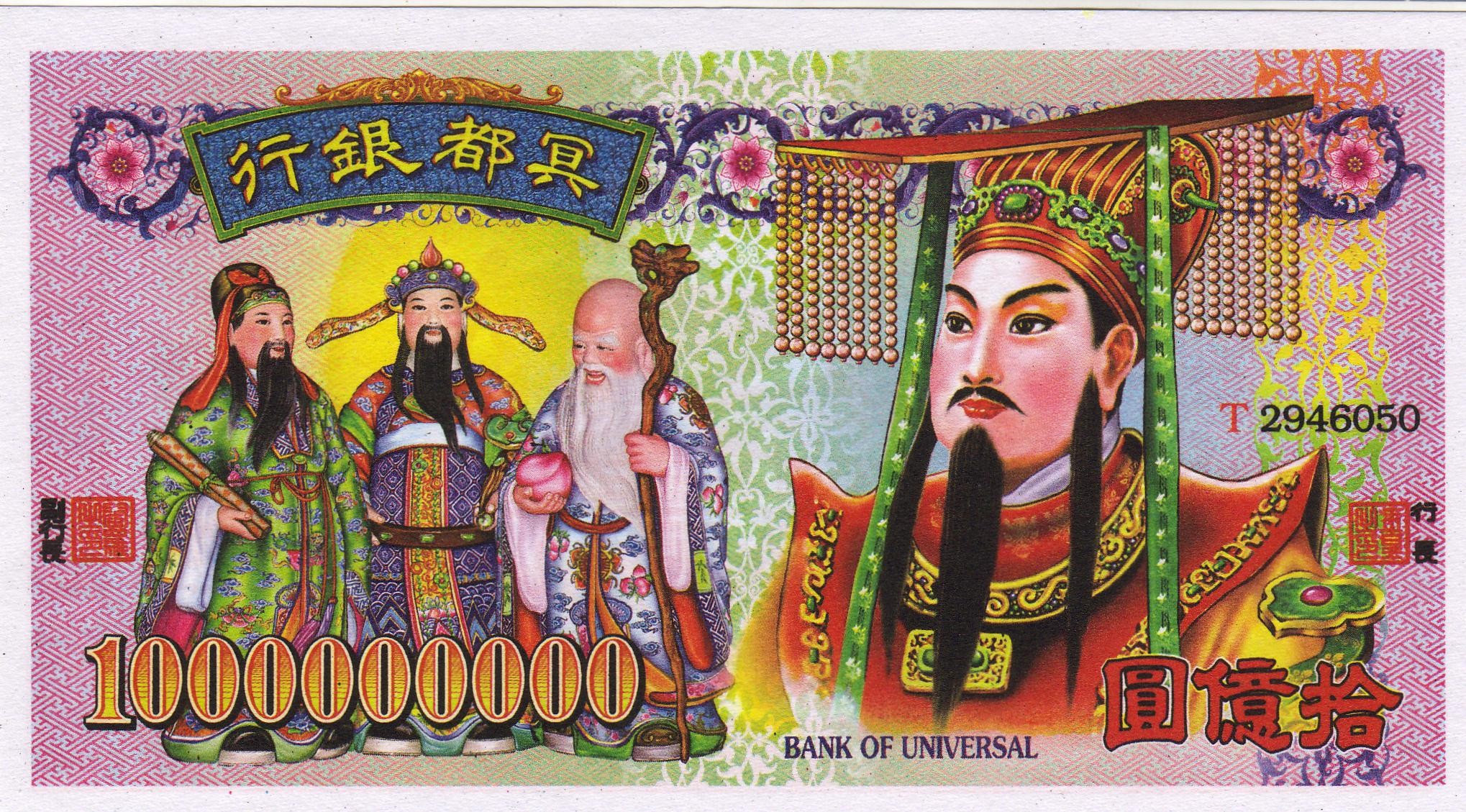Hell money is a
form of joss paper printed to resemble legal tender bank notes. The notes are not
an officially recognized currency or legal tender since their sole intended
purpose is to be offered as burnt-offerings to the deceased as often practiced
by the Chinese and several East Asian cultures. This faux money has been in use
since at least the late 19th century and possibly much earlier. Early 20th
century examples took the resemblance of minor commercial currency of the type
issued by businesses across China until the mid-1940s.
The
identification of this type of joss paper as "hell bank notes" or
"hell money" and singling them out is largely a Western construct,
since these items are simply regarded as yet another form of joss paper in East
Asian cultures and have no special name or status.
Earlier examples of these notes were issued in denominations
of $5 and $10 yuan and upwards, with such amounts being considered adequate
until inflation took hold within China from 1944. The soaring denominations of
authentic currency was soon reflected in that issued for the afterlife, and
after 1945 the majority of Hell banknotes were issued in denominations of
$10,000 or higher. These earlier issues more commonly depict landscape
scenes, temples or trains, and the numerous varieties may literally number into
the millions



I really like the concept of offering money to the recently deceased to guide them through and aid them in their afterlife. This has inspired me to consider making my banknote design more of an offering rather than a depiction, an offering to those people who have passed to guide them through the nine circles of Dante's inferno. This could be a nice combination of two very different ideas in banknote design.
No comments:
Post a Comment